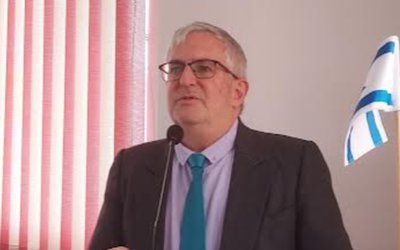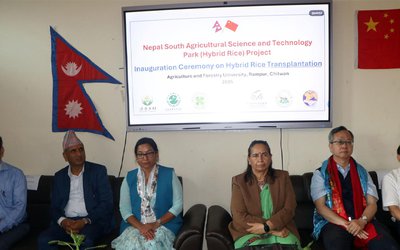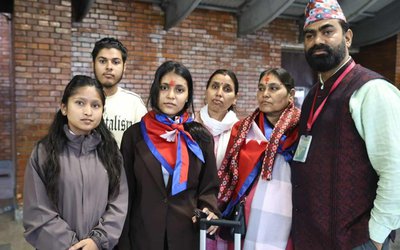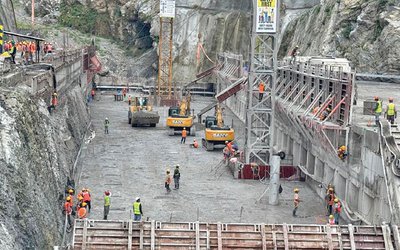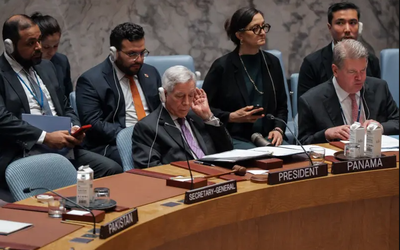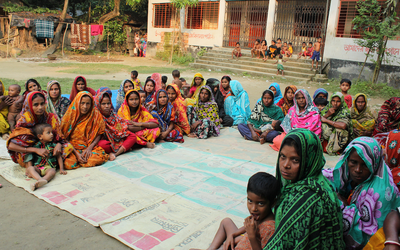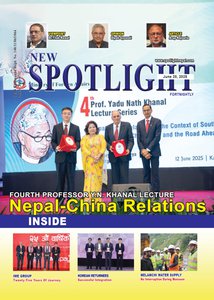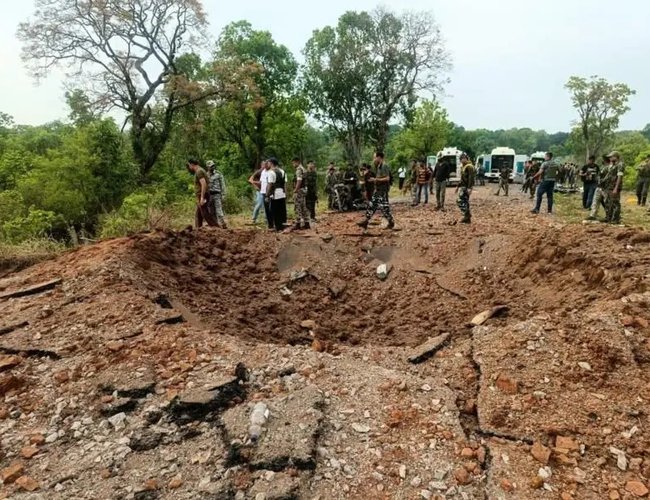

Various radical communist groups in Nepal, which have thrived and strengthened with support from Indian Naxalites and Maoists, have criticized the encounter killing of the Indian Maoist leader as inhumane and a human rights violation, while praising his revolutionary character.
The ideological foundation of mainstream communist parties in Nepal, including CPN-IML and the Maoist Center, is rooted in the Naxalite movement of India.
The Naxal movement in Nepal began in 1971 with figures like current Nepalese Prime Minister KP Sharma Oli, CP Mainali, RK Mainali, and others engaging in violent rebellion and targeting landlords in Jhapa, near Naxalbari, the birthplace of the Naxalite and Maoist movements.
While the ruling CPN-UML has not issued a statement on the matter, the Maoist Center and the Nepal Communist Party led by Netra Bikram Chand 'Biplab' have condemned the killing, with the
Maoist Center praising Rao as a revolutionary figure and calling for a political resolution to the Maoist issue in India.
The Nepal Communist Party, under the leadership of Netra Bikram Chand 'Biplav,' has strongly condemned the killing of Basavaraju and 25 others, denouncing it as a cowardly assassination.
The statement calls for an impartial investigation by the international community and human rights organizations into a political assassination, emphasizing the need to bring the perpetrators to justice. The press release underscores the importance of seeking truth and justice despite state-sponsored violence and atrocities.
“Naxalism in India or Maoist insurgency in Nepal were lost causes to begin with and will eventually be exterminated. Protests on encounter of Basavaraju in Kathmandu does not mean Charuvaad is alive, but sporadic cries. However, the Western powers tend to use the pages from Red Leaflets to divide weaker sections and dent social cohesiveness. Nepal must focus on inclusive growth, social justice and economic development of the people to eliminate discontent and signs of politically motivated movements like Charuvaad,” writes Navita Srikant, New Delhi based Nepal-India expert. She writes on Nepal India issue.
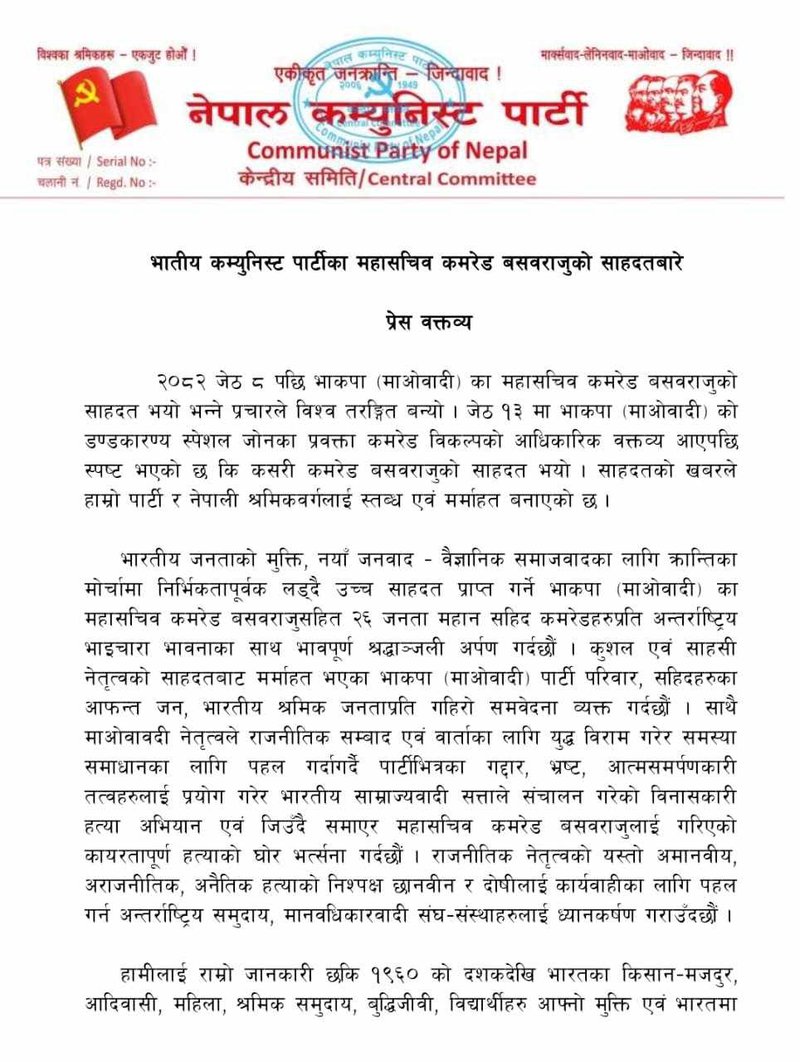
Indian Home Minister Amit Shah announced last week that Basavaraju was killed in a clash in the Maoist-affected Narayanpur region.
Basavaraju was heavily guarded by nearly four dozen individuals in two security circles, making it challenging for security agencies to reach him. Reports suggest that the Maoists used explosives to secure Basavaraju's location.
Various accounts have emerged regarding the circumstances of Basavaraju's death, with different narratives circulating depending on the source. According to a senior police officer from Chhattisgarh who spoke to the BBC anonymously, the police tracked a Naxalite comrade's mobile phone and used GPS to locate Basavaraju and his associates, leading to the operation that resulted in his death.
After Basavaraju's death, discussions have emerged in Chhattisgarh regarding the potential decline of Maoism in India. State Chief Minister Vishnu Deo Sai described his killing as a significant achievement, noting that t
here was a 30 million rupee bounty on Basavaraju's head. This marks the first time in three decades that a Maoist General Secretary has been eliminated, dealing a major blow to Naxalism. The backbone of Naxalism has been shattered, according to Sai.
While this is not the first instance of a top Maoist leader being killed in India, with Charu Majumdar's death in police custody in 1972, it underscores the challenges faced by the organization. Subsequent clashes with police in Bengal and other states resulted in the deaths of many Naxalite members. In 1975,
Subrata Dutta, also known as Johar, the General Secretary of the organization, was killed by police in Bihar.
Over the past 50 years, the Naxalite organization in India has evolved, prompting questions about its future. While similar questions arose when Johar was killed, the responses have evolved significantly. Today, the Naxalite movement, considered the "biggest internal security challenge," continues to face scrutiny, with government data indicating the deaths of
287 fighters (primarily in Chhattisgarh) in operations against the Maoists last year. The conflict has claimed over 10,000 lives since the 1960s.
Arun Dev Gautam, the Director General of Police in Chhattisgarh, is confident that Maoism will be eliminated before the March 31, 2026 deadline set by Union Home Minister Amit Shah. Gautam, who holds an MPhil in international law from JNU, expressed his belief that the movement will disintegrate soon after the neutralization of its top leadership. He acknowledged the sacrifices made by security forces and innocent civilians in the affected regions and emphasized the progress made in expanding security force presence to previously unsecured areas. Gautam stated that only a small area remains under Maoist control, and efforts are underway to completely eradicate Maoism from the region.
On the other hand, Ramesh, also known as Badaranna, who surrendered in 2000 after leaving the Maoist movement, argues that the ideology of Maoism will continue to survive even if senior leaders are eliminated. He believes that ideologies never die and that as long as a key leader is alive, there is a possibility for the organization to rebuild. Badaranna shared his experience of joining the Naxalite movement at a young age and highlighted the impact of eliminating key leaders on the organization's operations. He emphasized the importance of leadership in the organization's ability to function effectively.
Given the close ties between Naxalites and Nepali communists, the diminishing presence of Naxalites in India is likely to significantly affect Nepal, where communist groups have a strong influence. It is therefore understandable that Nepalese communists are expressing concern. Additionally, the recent popular movement in Nepal advocating for the reinstatement of the monarchy and a Hindu state is also worrying for the communist community in the country.
- EU’S ERASMUS MUNDUS: Scholarship For Quality Education
- Aug 05, 2025
- ADB: Partnership For Growth
- Aug 04, 2025
- HCC-N: Economic Ambassador
- Aug 03, 2025
- MONETARY POLICY: Disappointing Outcome
- Jul 17, 2025
- MELAMCHI WATER SUPPLY: No Interruption During Monsoon
- Jun 25, 2025


